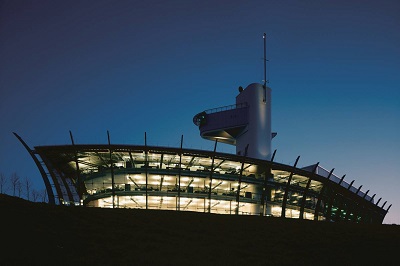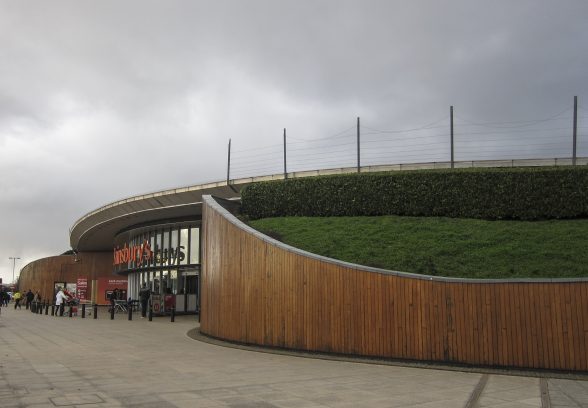This website uses cookies
This website uses cookies to enable it to function properly and to analyse how the website is used. Please click 'Close' to accept and continue using the website.




Welcome to C20 Society’s annual Buildings at Risk list. The following have been selected as our top ten threatened buildings for 2015, and have already helped draw attention to some very worthy cases.
Keeping a list like this helps us demonstrate how severe the threat is to some of the very best examples of the architecture of our period, and ensures that some of our longest and most intractable cases do not fade from view. It also serves to underline the fact that we are constantly campaigning for buildings of many different styles and dates, and provides a context for individual examples.
We are currently redesigning our website so that casework and campaigns are more prominent, and this list of buildings at risk will be an important part of that. We will review the Buildings at Risk list this autumn, when we will call for nominations for 2016.
Sadly, so far the only major change since we drew up our first list has been the removal of one building for the worst of all possible reasons: it has already been demolished. This ill-fated nominee was Chester-le-Street’s post-modern civic centre in County Durham. We hope that the others will fare better: they certainly all deserve to.
Henrietta Billings
Hyde Park Barracks, Knightsbridge, Sir Basil Spence (1970). Unlisted
See Clare Price’s report.
We are strongly opposing the building owners’ application for a Certificate of Immunity from listing, and have submitted our own listing application for the site.
Robin Hood Gardens, Tower Hamlets, Alison and Peter Smithson (1966-72). Unlisted
This iconic social housing development consists of two perimeter blocks of six and nine storeys with an irregular landscaped space between them. The inward-looking blocks are built of pre-cast concrete panels and projecting fins stitched into in-situ concrete floors, creating a rhythmic repetition of elements. This important and innovative design also incorporates continuous horizontal decks running the full length of each block – the ‘streets in the sky’ advocated by the Smithsons. Tower Hamlets has granted permission to demolish the complex; a previous COI has expired.
EH is currently assessing a new COI application, our response strongly supports listing.
Liverpool New Hebrew Congregation Synagogue, Liverpool, Sir Ernest Alfred Shennan (1936-37). Grade II*
Inspired by Swedish architecture and with Art Deco elements, this truly original synagogue incorporates a cantilevered gallery wrapped around three sides and a spectacular concrete barrel-vaulted ceiling with intersecting concrete arches. The finest surviving inter-war synagogue in Europe, it has deteriorated due to neglect and is threatened by a proposal to convert it to flats, with loss of original fabric and furnishings.
Threat ongoing.
Bernat Klein Studio, Scottish Borders, Scotland. Peter Womersley (1972). Listed Grade A
A space for the textile designer to receive clients and for designing, weaving and displaying fabric samples, it has been described as ‘an almost sculptural composition of concrete, steel and glass set on a black brick plinth’, among the most influential buildings in Scotland of its era. It has been derelict since 2003.
This building is on Scotland’s Building at Risk register, and remains at risk.
Church of the Holy Cross, Hoylake Road, Bidston, Birkenhead, F X Velarde (1957-59). Listed Grade II
The listing for this last church by Velarde shows ‘a distillation of Romanesque and modern motifs that is unique in his work’. Built of brown brick and ashlar, the exterior has a ‘jolly geometrical tower’ with five round-headed openings on each face and a copper pyramidal roof. The interior has a coffered wooden and gilded roof and polished marble and white mosaic tiling. It has been closed for some years and is at risk of deterioration.
Remains under threat.
Hove Town Hall, Sussex, John Wells-Thorpe (1970-73). Unlisted
This is an well preserved example of a late brutalist civic building in glass and concrete.The modulated bronze glass façade is marked out by a monumental concrete entrance structure defined by four giant hexagonal shuttered columns and two cantilevered canopies. The interior uses materials chosen to harmonise with the exterior. A proposal to install green double-glazed units and add an extension to the entrance would irreparably damage its internal and external coherence.
Our listing application, which was supported by John Wells-Thorpe, was turned down on EH’s advice at the end of 2014. The external alterations have been approved by Brighton and Hove Council.
Salvation Army Hostel, Newcastle, Ryder & Yates (1974). Unlisted
This centre, originally built to house 184 men, incorporates dormitories, day rooms, restaurant, facilities for old people and a small hospital. Constructed of blue brindle brickwork, with narrow strip windows carefully organised to allow for maximum flexibility, it is accessed by two curved ramps under a boomerang-shaped canopy redolent of Lubetkin’s Highpoint Two. The Salvation Army recently lost a bid to take over Homeless Services in Newcastle, and so have vacated the building, which is under threat from potential redevelopment or unsympathetic alteration.
We have submitted a listing application which is currently under assessment.
St Peter’s Seminary, Cardross, Gillespie, Kidd and Coia (1959-67). Listed Category A
Widely seen as the finest modern building in Scotland, St Peter’s Seminary was commissioned by the Archbishop of Glasgow in 1958 and completed in 1966, but closed just 14 years later. It consists of a main block including the church and sanctuary, a refectory block with a a honeycomb of vaulted student cells above, and a teaching block of rhomboid plan incorporating a library and lecture theatres. Built of in-situ and pre-cast concrete panels, the complex has echoes of both Le Corbusier’s La Tourette monastery and WWII Atlantic Wall bunkers. It is in an almost ruinous state and despite proposals for reuse or renovation, its future is insecure.
Threat ongoing
Sainsbury’s Greenwich, Chetwood Associates (1999). Unlisted; COI granted
This unique eco-millennium store represented a complete re-think, with every aspect of the standard retail ‘shed’ re-assessed to maximise energy efficiency, minimise environmental impact and improve customer experience. It now looks set to be lost; planning consent has been granted for the building to be demolished and replaced by an IKEA ‘shed’ of the type the building so successfully challenged.
We supported a listing application by the original architect, but listing was refused and demolition is imminent.
Former Western Morning News HQ, Plymouth, Nicholas Grimshaw and Partners, 1993
This award-winning ship-shaped building on a hillside overlooking Plymouth has been empty since 2013 and is threatened with demolition. Built to house the printing presses and editorial offices, it features an innovative transparent glass facade and a boardroom in a tower 22m above the site. The company was so proud of the building that it was used in their company logo. The Daily Mail and General Trust which owns the building has applied for demolition.
We have submitted an urgent listing application to EH, which has been strongly supported by Sir Nicholas Grimshaw.

Become a C20 member today and help save our modern design heritage.